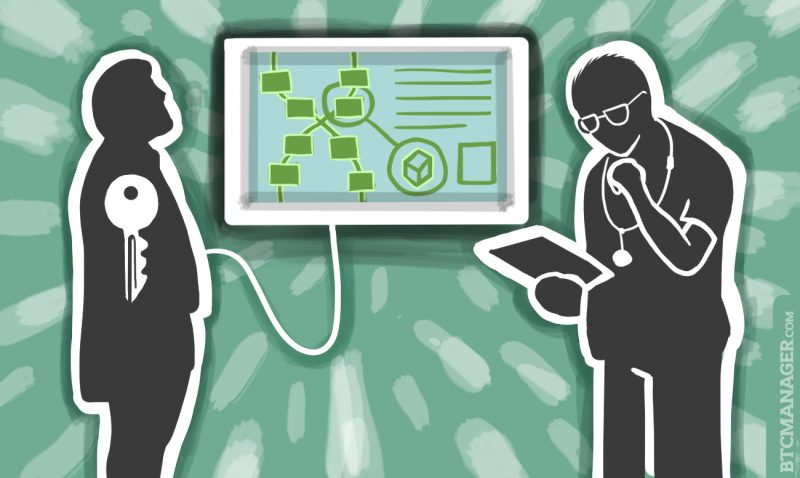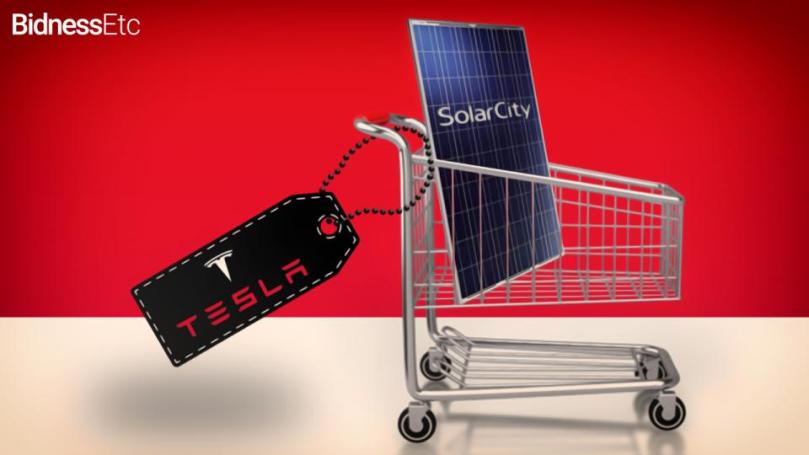In the last 6 months, my wife and I traveled to Europe and Asia on 2 separate occasions. I saw people riding bikes everywhere. That by itself is not surprising. What did surprise me however, was that almost every single bike I saw had an electric motor and battery pack on it. I had never seen anything like that state side. I have seen electric scooters riding around in Toronto, but those were incredibly bulky and wasn’t very pleasant to ride. On these new bikes, the battery packs and motor had such a compact package that it almost feels like it’s intended as part of the bike.

Unfortunately, I didn’t get a chance to ride on one of those electric bikes during my time in Europe and China, but they left an impression on me. I started doing some googling. It turns out there are more than 200 million E-Bikes in the world. That’s way more than I expected. Annually, the world sells 34 million E-Bikes. Asia dominates the market, accounting for close to 90% of worldwide sales. Europe comes in at a distant second, accounting for 5%. North America has <1%, accounting for a measly 152,000 units in 2016 [1]. I was curious why these E-Bikes have such a high level of adoption elsewhere, but almost non-existent here in North America (in both US and Canada).
To truly understand, I wanted to experience riding an E-Bike first hand. I decided to acquire one and use it as my primary form of transportation for a month. To make sure I have good metrics to reference, I used Strava to log all my rides.
So far, I have ridden about 100 miles with a good mix of bike trail and roadway. I would say that overall, it’s been a very positive experience. Here is what I learned during this process.
Build vs Buy
I originally thought I could just buy an E-Bike online, but the prices were significantly higher than I initially thought. I was budgeting around $500 to $1000, but buying a turn-key bike off the shelf often cost more than $3000, and can go up to $5000. There are cheaper ones, but they are all cheap for a reason. I didn’t want this experiment to be ruined because I cheaped out and bought something subpar. Moreover, I wanted a mid-drive solution for performance reasons. This way, I can take advantage of my bike’s existing gearing. To better understand the differences and trade-offs of each setup, click here. I found a few reputable vendors selling E-Bike conversion kits. They often have higher spec motors for a much cheaper price. After some research, I decided to build one myself instead. I bought the bike from a local guy on craigslist, and the conversion kit (including battery + charger) from LunaCycle. Having now gone through the experience, I would definitely recommend the build route. It was such a cool learning experience and you just get much more value for your money.
Below are all the parts I bought:
| Part | Link |
Price ($) |
| Bicycle (Used) | http://www.sears.com/iron-horse-29inch-men-s-bike/p-00665027000P |
$200 |
| BBSHD 1000W Drive kit | https://lunacycle.com/bafang-bbshd-1000w-mid-drive-kit/ |
$679 |
| Battery | https://lunacycle.com/52v-panasonic-11-5ah-or-13-5ah-shark-pack/ |
$496 |
| Charger | https://lunacycle.com/52v-3amp-luna-mini-charger/ |
$55 |
| Total |
$1430 |
Here are some photos of my converted E-Bike once complete. I really like how it turned out:


The build itself wasn’t super difficult, but did take significantly longer than it should have (about 10 hours over the course of a week). This is mostly due to my own inexperience working on bicycle. Most of the time wasted trying to find the right tools and parts. Realistically, the build can be done under 2 hours. Here are some tips to save you some trouble:
- I didn’t realize I needed special tools to work on a bike. I had to buy this set from Amazon (link)
- The spanner I had didn’t have enough leverage and grip to take off the bottom bracket. I ended up finding this Sheldon Brown method on youtube that worked wonders (link)
- The battery case didn’t fit onto the water bottle mount so had to buy another bracket to offset its position. (link)
- When taking off the chain, and afterwards realizing I shouldn’t take the entire pin out. Spent an hour trying to get pin back in until I gave up. Ended up buying a quick link from KMC (link).
Overall riding experience
Since finishing the build, I have put about 100 miles on the bike over the next 2 weeks. The riding experience have been very positive. I am really surprised at how much better the riding experience is, Below are some telemetry data from a typical ride that I do from home to work:


- I think the best thing about my E-Bike is that it increases my baseline speed when riding. I’m still exerting effort pedaling, but now I stay in the 20-30 MPH instead of 10-20 MPH range. With the help for an electric motor, getting up to speed takes significantly less effort. I can also power through hills without significant loss in speed. As a result, I find that I am enjoying the cycling experience a lot more.
- My second favorite thing about the E-Bike is that it’s really nice to be able keep up with traffic on the road, particularly when there isn’t a bike path. It feels much less scary.
- My third favorite thing is that I can get to work in basically the same amount of time as driving. On my E-Bike, it takes 22 minutes to get to work (7.5 miles). It takes me 15 minutes to drive there. It would normally take me close to 40 minutes on a regular bike. While the E-Bike lacks the top speed, I make it up in stop and go traffic when I can always skip to the front of the traffic light.
- I’m also not sweaty when I get to work, no need to take shower.
- My 13.5 Ah battery is good for about 50 miles, way more than most people commute in a day. However, I typically recharge after 30 miles. It’s not good to completely drain the lithium ion battery pack.
- At 750W setting, the bike already feels plenty fast. I have reached speed of 35 MPH pedaling on my bike, that’s only on a medium power assist level. I honestly don’t think it’s safe to go much faster than that on a normal bicycle.
- For flat city riding, I really only need 1 gear. On cities with more hills, I can see the need for 3, but 9 gears in the back is overkill.
- My biggest surprise was that pedaling felt much better than using the throttle. Even though I can actually go faster when I use throttle, I still compelled to pedal. I think the bike ergonomics is just designed for pedaling so it felt more comfortable, or maybe my preconception is still that I am on a bicycle, so I should pedal. I did feel a little weird being on the bike path with other bikes and passing them without pedaling.
- I tend to use throttle only when I want to accelerate quickly off a red light
Economics of owning an E-Bike relative to car:
- Riding a bike makes is unsurprisingly much cheaper relative to driving a car. By my own estimates, riding an E-Bike cost ~$0.14 per mile (assume battery pack last 500 cycles and routine maintenance on brake pads and rotor) where as driving cost $0.86 per mile. When I replace my 15 mile commute from car to bike, I am able to save ~$2800 each year. The math here is a little fuzzy and have quite a few assumptions baked in, but know that the savings come from the following areas (I might write a more detailed post on this later):
- Most of the savings come from lower depreciation and maintenance.
- No insurance or parking required.
- Electricity is much less costly than gasoline.
- It would still be difficult to completely replace car here in Arizona
- Summer is way too hot to ride a bike. Riding in 100+ degree sun is just not my idea of good time.
- Phoenix is fairly spread out. Going anywhere outside of work and local restaurant would be better suited in a car. I can see E-Bike being adopted much faster in a denser city like New York, Boston, San Francisco, or Toronto
Why adoption hasn’t happened yet
If the ride is so great and economics so favorable, why haven’t I seen more adoption here in US and Canada? If I have to guess, I think there are a few reasons why:
- Current E-Bikes are still too expensive relative to other transport alternatives and there is a lack of available financing options to smooth out the capital outlay. On average, an E-Bike cost between $3,000 to $5,000. In China, your average E-Bike cost around $500. Most Americans just don’t have that type of money saved up in their bank account for what is currently a luxury item. In some ways, a car is actually more affordable than an E-Bike because you can finance a car with $0 down.
- The current E-Bikes are too easily stolen. This is especially a problem in the major cities where E-Bike make the most sense. It just doesn’t make sense to use the same lock mechanism to secure a bike that is $200 vs $2000. I think there is more that can be done on that front for E-Bike. For example, why not lock up the powertrain so the bike can’t be pedaled when off, or notify me on my phone when my bike is on the move while locked.
- Off the shelf E-Bikes performance are too low. Most of the commercial E-Bike uses 250W or 350W motors, because that’s what the European specs are. While that amount of power is able to achieve 20MPH range, it does take its time to get there. In the US, with the open roads, that’s simply not enough power to keep up with traffic. Quite frankly, they still feel like a plain bicycle and it’s a bit boring to ride. Higher adoption require more power.
- E-Bike conversion kits feel more like a prototype than a complete product. The approach most E-Bike builders have taken is to retrofit an existing bike with a motor. While that is often times the most economical option, the bike does feel like a mishmash of parts when done. While they work, but they don’t work as well as you would like. For example, the transmission on an electric motor doesn’t nearly need as many gears, because there’s already an electric power to supplement power. The brakes are often too soft to handle continuous elevated speed. What ends up happening is that I spend more money overtime to upgrade the bike to my desired state. So far I spent about $1500, including parts and tools, this is accounting for a fairly cheap used bike on craigslist ($200). Had I bought a new bike, I would have had to spend probably close to $1900. To make it exactly the way I want it, I estimate that I have to spend an additional $800 to get install IGH, bigger brakes, and more efficient tires with less rolling resistance.
- Software is a step behind the hardware. There are bunch of vendors that are selling kits that have more power, but the electronics are often incompatible. They just don’t feel like the complete package “that should just works”. Most of this is on the software side. Making software + hardware work seamlessly together is hard when everything is built in house. It’s much harder when parts are built by different manufacturers without any real standards in communication protocol. Example:
- My battery charge % being displayed doesn’t reflect accurately because the battery pack is 52v instead of 48v to eek out additional power.
- My display has options to monitor each cell’s charge to ensure that they are balanced. But because the battery pack is custom built by state-side vendor and doesn’t use Bafang’s BMS, those displays don’t work.
- The watt meter also doesn’t get reflected properly.
In order for E-Bike to really take off, I think there is a need to design it from the ground up. Instead of building the motor and battery pack around the frame, the right way to design an E-Bike is to build the frame around the motor and the battery pack. Ideally, the battery pack should be integrated into the frame for a sleeker look. The transmission used should be an Internal Gear Hub for higher reliability, and brakes need to designed to operate in the 30 mph range. Headlight and taillight should be integrated into the bike for night riding.
More importantly, the bike as well as its accessories should also be thought of as an iphone instead of just a purely mechanical system.
- I should be able to program different modes of operations directly on my app (sports mode, eco mode, etc.).
- Over the air update should be possible as power electronics continue to be refined.
- A companion app should accompany the bike to provide detail telemetry data and possible error diagnosis.
- My battery charger should be smart enough to balance the battery charge at 80% instead of waiting until it got to 100% and help prolong the life of my battery pack. Battery Management Systems (BMS) on an E-Bike still have a lot of room to grow.
What’s next
I am however fairly optimistic that these things will be done in a relatively short time scale. A lot of these technologies are starting to show up in the automotive space. It’ll likely take some time for them to flow down to a price point where it make sense for an E-Bike application. At that point, I think E-Bike will become a much more integral part of people’s lives.
In the meantime, I plan to experiment with a few other things for this bike:
- Tune/program the motor controller to vary the motor wattage and petal assist setting to understand tradeoff
- Build my own battery pack with more capable BMS
- Update the bike drivetrain (bigger brakes, make use of Internal Gear Hub, more suitable tires for city commute)
Reference:






